Summer Fun in the Sun: Crape Myrtles
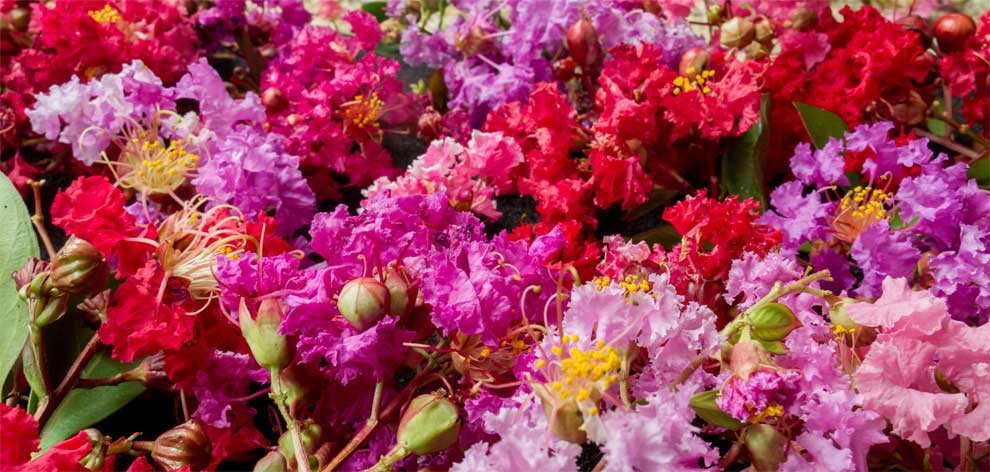
High summer is when our gardens aren’t as appreciated as they are in spring or fall. (Don’t get me started on winter!) I get it; here in the mid-Atlantic, it’s hot. It’s muggy. It’s buggy. Sunburns, mosquitoes, and sweat are the trinity of misery in July and August. But most of us go out anyway, don’t we? Fireworks, cookouts, pool parties, sports games, hikes, bikes, jogs, walking the dog and running errands, to say the least. Just because you may not spend as much time in the garden in summer as you do in cooler weather doesn’t mean it has to be any less interesting.
Most of us will recognize the tried-and-true staples of the summer garden: hydrangea, butterfly bush, rose-of-sharon and crape myrtle. This quartet of shrubs and small trees is invaluable for contributing long-lasting flower power with ease of care, but not many gardeners know how much diversity they contain these days. All four groups have exploded in their range of choices in recent decades, but I’d bet the greatest expansion belongs to the crape myrtles.
With so many good options it’s hard to choose what to stock, so we typically end up with a lot of choices – nearly 50 at current count this year. Although nowadays they only differ in three major traits – leaf color, mature size, and flower color – there are myriad combinations of these that create a variety for just about any spot. Here I will walk you through all the varieties currently available to help the decision-making process be less overwhelming. Rest assured that almost every variety nowadays has above-average to excellent resistance to powdery mildew, is winter-hardy here, and has great fall foliage displays. Taller varieties have noticeably showy mature bark, but even those without prominent colors still have beautiful smooth trunks. So get comfortable and let’s delve into the modern world of crape myrtles. I’ll group them by size so it’s easier to imagine them in different uses; size is the most important factor when deciding which to grow so you don’t have to stress the plant (or yourself) by needless pruning.
How Low Can You Go?
“Dwarf” in crape myrtles these days takes on new meaning. Multiple varieties are now on the market which mature no higher than your hip, and a few are even flirting with the idea of behaving like groundcovers with their sprawling habits. Old varieties Chickasaw and Tightwad have been quite hard to find in recent years (probably because there are many great alternatives that have appeared with bolder colors and lusher growth), but sibling Pocomoke is still popular. The Filli series, the Infinitini series and a few varieties in the Princess series (Jaden, Kylie and Lyla) are equally short. Rosey Carpet and Orchid Cascade are both semi-spreaders and would look fantastic draped over the edge of a retaining wall or raised bed.
Because they’re so compact, these ultra-dwarf crapes are very easy to mix in with other short-statured plants in a mixed bed – which is how I prefer to garden, so the mixture always offers something seasonally interesting and pest or disease outbreaks are rarely an issue. Lots of perennials develop into the size of a small shrub and would mesh beautifully with one of these crapes. For example, Russian Sage’s bluish-lavender flowers would be a lovely complement to a white or purple-flowered crape myrtle. A silvery or bluish accent from a low juniper or soft Artemisia foliage would add to the cool color palette. Warm colors like the reddish-pinks work well with yellow-flowered St. Johnswort, orange- or pink-flowered Coneflowers or several of the Drift roses. They also look stunning when paired with foliage in dark colors, such as the Weigelas with purplish-black leaves or perennial grasses that turn burgundy-purple in late summer.
Short and Sweet
The next size up in dwarf varieties grow about the height of a tall person, which is still nice and compact as far as crape myrtles go. One of the first series on the market in this size is the Dazzle series, which offers several color options with dainty, smaller-than-average leaves. Other older varieties like Snow, Centennial, and Pink Ruffles have more normal-sized leaves and blooms. For deeper, richer colors, Victor and Velma’s Royal Delight have been around for awhile and are lovely; newer options include the other two Princess series varieties (Holly Ann and Zoey) and Midnight Magic, one of the Magic series.
If you want to complement these crape myrtles with companion shrubs of similar size, try “black”-leaved Elderberry, whose foliage offers fantastic counterpoint; Summersweet, who will perfume the garden at the same time the crapes are blooming; Panicle Hydrangea, whose white and pink flowers also appear at the same time; and Butterfly Bush, who will also scent the air and provide a similar color palette to play with.
Petite Trees
This is the height category for crape myrtles that is difficult to classify – they’re barely big enough to be considered trees but they’re on the large side for a shrub. Growing between about 6 and 10’ tall, there’s an impressive array of choices in this group. Some have been around for a long time, like Hopi, Pecos, Royalty, Tonto, and Zuni. Various plant breeders later produced Pink Velour, White Chocolate and Double Feature, and then more groups like the Magic series (Coral, Moonlight, Plum, Purple, and Red) and the Barnyard Collection (like Purple Cow and Red Rooster).
Due to their greater height – especially if pruned to look like trees – these would look best when underplanted with interesting foliage or shade-tolerant flowering plants. Varieties with dark leaves would be especially fun to pair up with foliage of other colors to extend the season of interest to spring. One good candidate is perennial Plumbago because it handles the mix of sun and shade that a crape myrtle of this stature will have underneath it. Plumbago is a low, creeping plant with a relatively long summer bloom season and has true-blue flowers to boot, a rare thing for any shrub or perennial. Ferns would add a nice soft texture to exposed trunks, as would Siberian Carpet, a juniper-like groundcover that keeps its foliage in winter. You can add another layer – spring-blooming bulbs – to bring even more seasonal changes to the tree’s footprint. Try Crocus, Reticulated Iris, Squill or many others – since crape myrtles leaf-out late, they will get the sun they need before going dormant and making way for the other perennials to emerge.
Compact Trees
This category overlaps with the previous one since some of the mature size ranges of these varieties could be as low as 8’; since they often reach the upper end of their stated sizes, though, I’m mentioning them here. This group grows tall enough to look like bonafide trees, typically maturing between 10 and 20’ tall. Tried-and-true National Arboretum selections abound and include Acoma, Apalachee, Arapaho, Catawba, Lipan, Potomac, Powhatan, Sioux, and Tuscarora. Here too, breeding programs in recent years have introduced additional fun choices – often with colorful foliage as a bonus – like Bradberry Wine, Burgundy Cotton, Dynamite, Rhapsody in Pink, Siren Red, and the most recent Black Diamond series (some of which can also, confusingly, be called the Ebony series).
Since these grow to the size of a small dogwood or redbud, they make great alternatives to some of the common choices of small trees that only bloom in spring. Here too, underplanting them adds to the seasonal interest. With higher branches, the greater amount of space allows you to a wider range of companion plants to play with. Many shrubs that grow to about 4’ tall or less and tolerate some shade make great in-season partners, such as Bigleaf Hydrangea, Summersweet, and re-blooming Azaleas. Add some ferns for texture, Heuchera and Hosta for leaf color, and Ajuga as a groundcover and you’ve got yourself a nice medley of interesting plants that will all harmonize with each other for a stunning summer display.
Stately Trees
These are the classic, large-statured crape myrtles of old – most of which are so familiar to landscapers that they just use them anywhere and prune them to death when they get too big. (Don’t do that. It’s a really bad practice and, as you’ve seen, there are plenty of shorter varieties to pick from.) If you have the space, though, these 20 to 30’ varieties make magnificent trees and can have very showy bark to boot. Most are National Arboretum introductions from decades ago, like Biloxi, Choctaw, Miami, Muskogee, and Natchez. A little while later Raspberry Sundae and Red Rocket came along and added minimal seed production, true red flowers and reddish new growth to the mix. All are worthy of wider use as they cast just the right amount of shade (that is, not too dark) to still allow for a colorful shade garden underneath.
Here too, Bigleaf Hydrangeas would be a great complement to the boisterous colors of the canopy above them, and many repeat-bloom so they’ll keep pace with the crape myrtle flowers. Leaves in blues or purple-blacks make wonderful foliage complements to each of the above crape myrtle varieties; try Fothergilla, Mahonia or large Hostas for cooling blues and Ajuga or Heuchera for deep purples and near-blacks. False Arborvitae, Yew, Plum Yew and dwarf Hemlocks add the soft texture of a conifer with the shade-tolerance needed to do well under these trees. If you like the austerity of a single groundcover, Sweetbox will do well and provide a glossy dark-green blanket, and in moderation, so it won’t wander rampantly into other parts of the yard.
After that whirlwind of an introduction to crape myrtle varieties by height, let’s switch gears look at them in another way – for foliage interest and uncommon flower colors. If height isn’t a limiting factor for you, this is a good way to decide on which variety helps you achieve the look you want and can fit into an existing color palette. I love gardening with foliage colors and textures almost more than I do with flowers, so for me, the leaf color alone on some of these crape myrtle varieties is enough to make me want to design with them.
Fun with Foliage
Like many plants, years ago your basic crape myrtle foliage came in one flavor – green. Sure, there’s nothing wrong with green, and you can still do a lot of beautiful design work with various shapes, textures and shades of green, but sometimes it can leave you wanting. As is the case with a lot of garden plants these days, breeders worked hard or got lucky and new colors started popping up at a fevered pace. Among the first were the Whitcomb series, which we’ve already mentioned members of this series by their trademarked names because hardly anyone uses their hard-to-remember “Whit” names. Their new foliage emerged red or purplish and sometimes stayed fairly red-or purple-blushed even into summer. Then the Magic series made an appearance, who also have reddish or purplish new growth but tend to hold that color better as the leaves mature. Most recently, there’s the Black Diamond series, whose leaves emerge a purplish-black and stay dark all summer long. It’s hard to believe until you see them in person how dark they are, and it’s a beautiful thing; I don’t think I’ve ever seen shrub foliage this dark that doesn’t fade in the heat. Their design potential with foliage interest alone makes this series one of my favorites among crape myrtle.
Almost all of the green-leaved crapes get good fall foliage color; some years, some varieties get what I would call excellent fall foliage color. As with many plants, fall color can vary from year to year as it is partially dependent on weather; I’ve had a shrub be scarlet one year and yellow-orange the next. The trade-off with the darker-leaved selections is that they don’t seem to have a color change in fall; at least, that’s what we’ve noticed here because we have so few left in stock that late in the season. Still, I think having a purplish-leaved shrub in the mix of red, orange and yellow fall foliage in the garden is still a great source of interest and contrast.
Uncommon Colors
True red was a rare thing for crape myrtles until relatively recently. Now, multiple varieties offer flowers in vibrant, unabashedly red clusters. An interesting quirk with several of the reds, though, is that cool or cloudy weather can cause the red pigment to not form properly and flowers opening under such conditions open white or pink. I have read that even small doses of drifted weed killer (glyphosate, which is in RoundUp and other brands) can interfere with the formation of that red pigment and red-flowered varieties can have white or pink flowers for weeks following contamination. Not all may react this way, however (Siren Red is one such variety), and rest assured that once hot, sunny conditions return all flowers will open red. You can view this as an interesting feature, giving you multi-toned flowers in red, pink and white on an otherwise single-color plant. As an interesting aside, Burgundy Cotton is white in hot weather and pale pink in cooler or cloudy weather. Go figure. So what’s going on there? I admit I don’t know, but it certainly keeps things interesting.
Bicolor flowers are very rare, but Raspberry Sundae is one that often has white edges to each flower when the weather isn’t super hot (my guess is this is related to the phenomenon mentioned above). Other varieties can have saturated and faded flower colors on the same cluster, since they open over a long time, and give a nice “confetti” look to the plant as a whole. I have seen Catawba do this often, having deeper and paler purple flowers open at the same time, and Princess Zoey is known to have both pink and cherry-red flowers in the same cluster.
Then there are those few colors that are hard to define and are pretty unique in the crape myrtle palette, and describing the colors is kind of splitting hairs when it comes to how much red or blue there is in a hue. Seeing them side-by-side with other varieties is the best way to appreciate the differences. I try to photograph them together for comparison, but the camera doesn’t always do the colors justice. Several varieties are somewhere on the spectrum of a fuchsia-magenta blend; not red, but also not quite pink and not quite purple. Bradberry Wine, Black Diamond Mystic Magenta, Double Feature, Princess Kylie and Velma’s Royal Delight all fit into this hard-to-describe group of colors. From a design perspective, these nuances in color are great for making beautiful color harmonies and unexpected contrasts with other plants. To me, they go well with all of the other crape colors – red, pink, white and purple – and even serve as great complements to oranges and yellows.
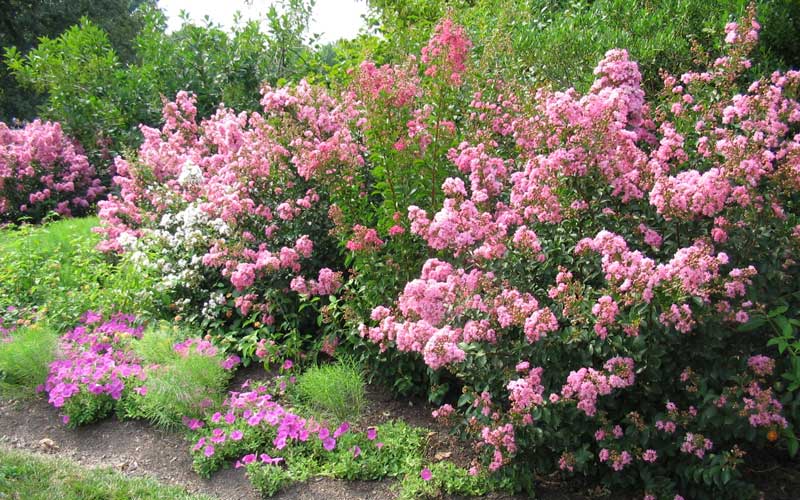
Care and Feeding – The Dos and Don’ts
The added beauty of crape myrtles is in their care – or lack of it, really. Yes, like any new plant, they should be checked for water regularly; coddling them through their settling-in period goes a long, long way towards establishing a healthy, resilient plant in the future. But established crape myrtles tolerate several unpleasant conditions such as drought, poor soil and misguided pruning. One should always strive for giving your garden companions the best start in life, though, so that means doing a few things that will make life easier for everyone.
Light: crape myrtles are sun-lovers. Six hours – minimum – of direct, no-holds-barred sun will keep them vigorous and well-flowered. They will tolerate less, certainly, but you may be disappointed with fewer flowers or lack of vigor.
Soil: clay is doable but adding a bit of organic matter back into the soil goes a long way to improving root health, water absorption and overall performance. LeafGro is our compost of choice but home-made will do just fine, if you have some. Mulch over the roots keeps them cooler and less weedy, but I prefer to use a “living mulch” of perennials or groundcovers because it accomplishes the same task with more beauty and more opportunities for design. (Plus, you don’t have to add more mulch every year.)
Water: crape myrtles are notorious for using a lot of water while they’re still here in their pots (that’s why they should be planted as soon as possible). While they won’t dry out as fast once they’re in the ground, they still should be checked for dryness often. As with everything, water deeply when needed, but only when needed. You want the roots to seek out water in the deeper, cooler layers of soil rather than being spoon-fed little sips of water more often, which sets them up for a rude awakening the moment you aren’t able to water them on time.
Pruning: here is where people give themselves more work than they need to. Don’t top them, and don’t reduce their size too drastically. They don’t need pruning for their health, and like most things, pruning triggers growth. Do not prune in fall or you risk winter die-back on everything you trimmed; they need to have enough time to prepare their stems for winter, and it takes longer than we think it does. You can remove spent flower clusters if the seedheads bother you; sometimes it lightens the branch tips enough that a heavy rain won’t make them bend over once the seedheads are gone. Some varieties re-bloom well if dead-headed right away. (Some are sterile and so it won’t matter.)
Crape myrtles leaf-out late in spring, and if you’re not accustomed to it you can easily think they didn’t survive the winter. If branches do die back from the odd cold snap, wait until the leaves emerge to trim them back so you know how far down you have to go. On varieties that develop trunks, the bark will peel in its own time when the stems are old enough.
All of this advice may seem like a lot to take in, but none of it is unique to crape myrtles. Most shrubs and trees are very low-maintenance and have long lifespans if given simple care. If you’d like to see a number of mature crape myrtles, visit the National Arboretum this time of year – they have quite the collection of their own introductions plus others still being evaluated. I encourage you to try them if you haven’t; so many fit easily into smaller yards and they add so much liveliness to the summer garden, especially when you partner them with other summer bloomers. They always excite me when they start to bloom each summer because I get so many good design ideas.
by Miri Talabac, Woody Plant Buyer

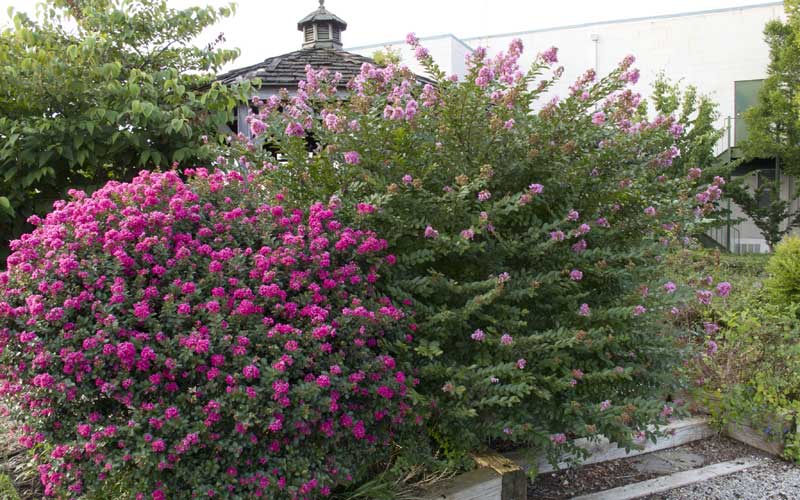
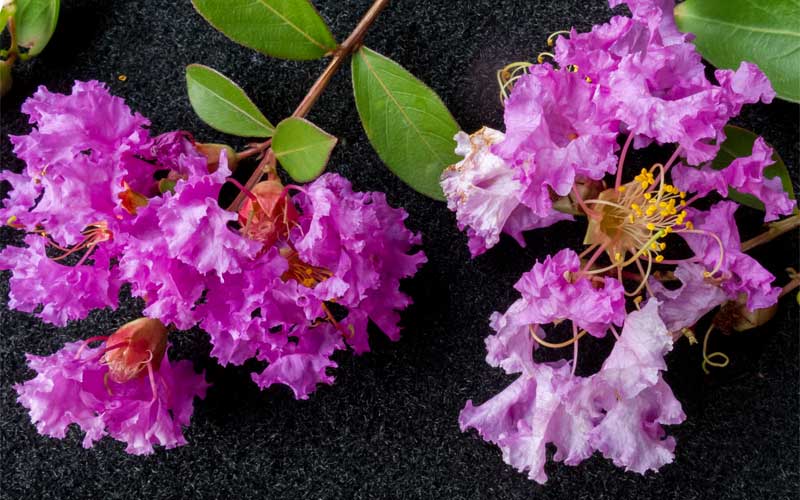
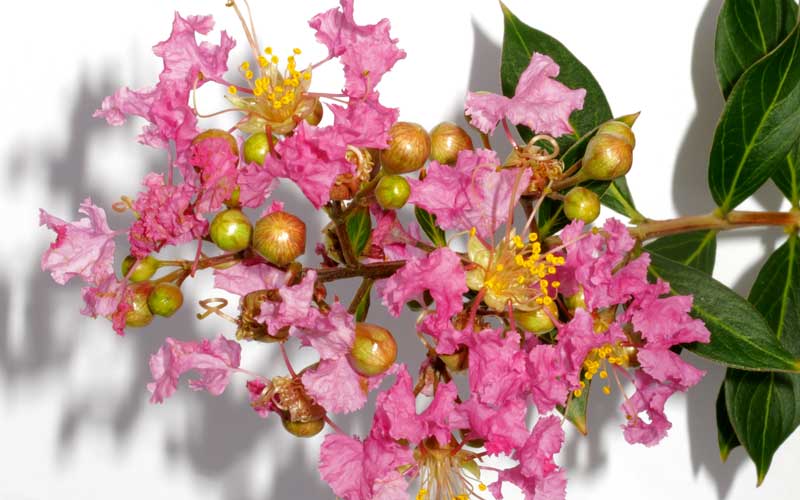
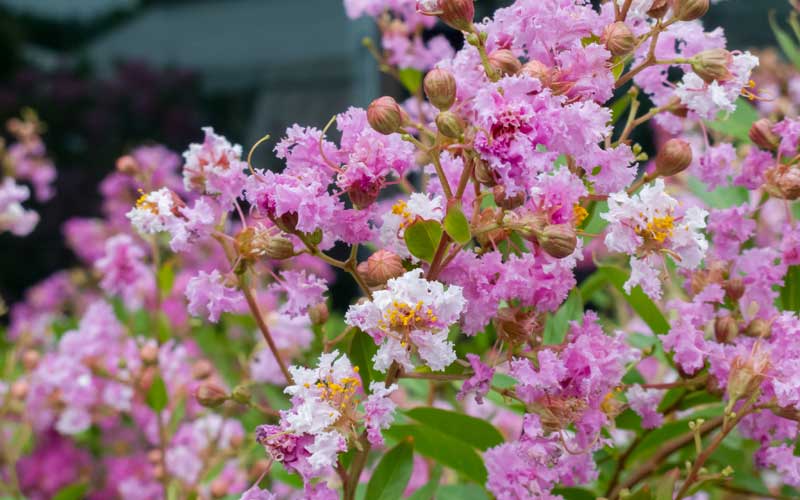
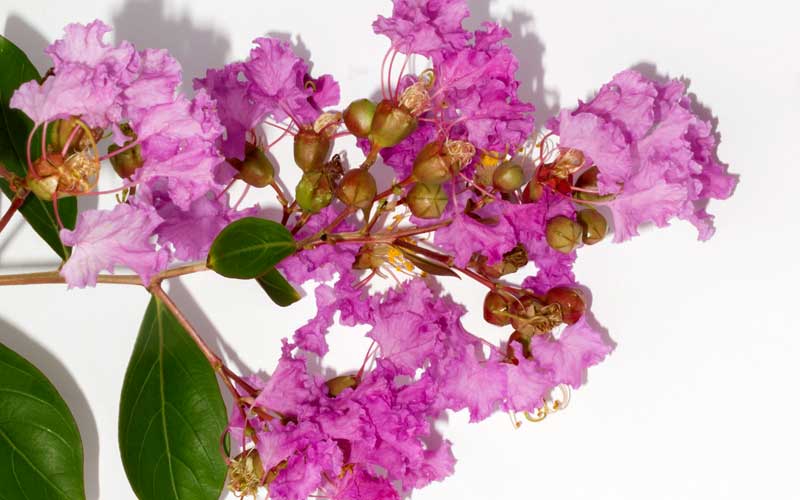
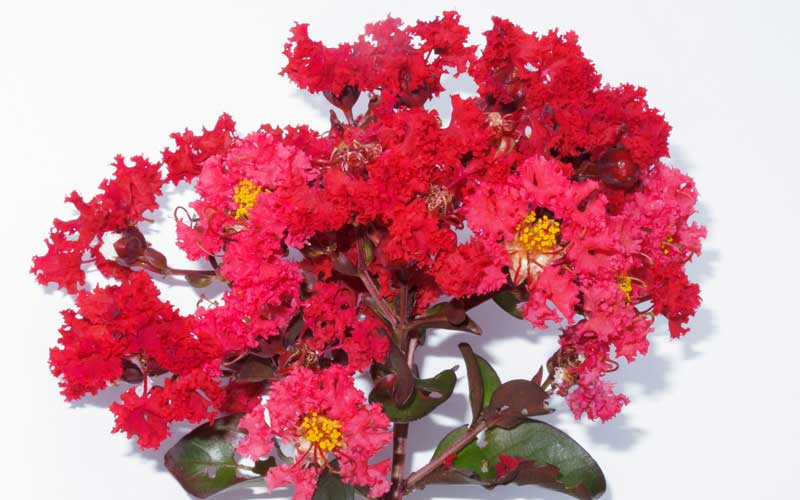
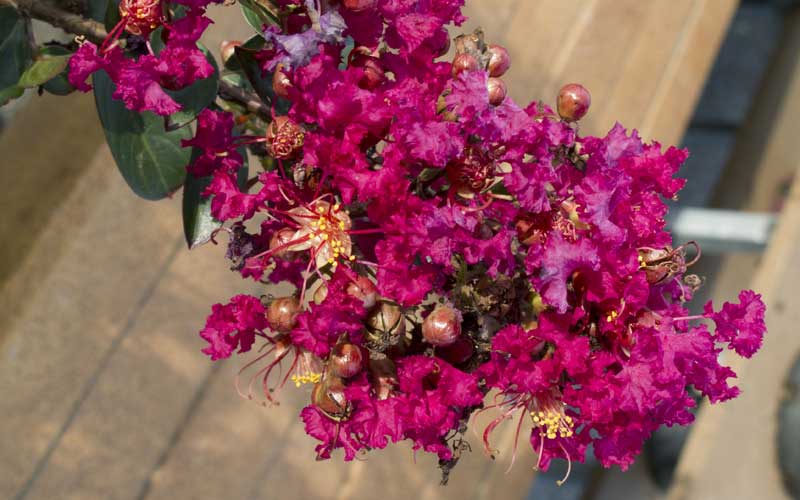

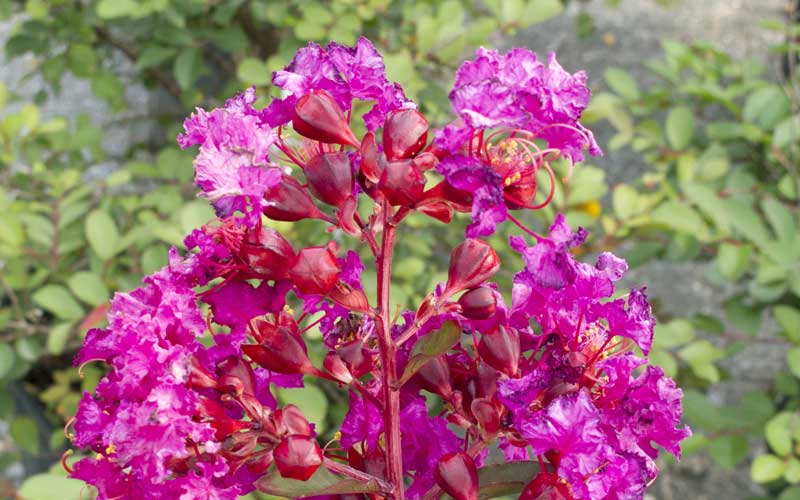
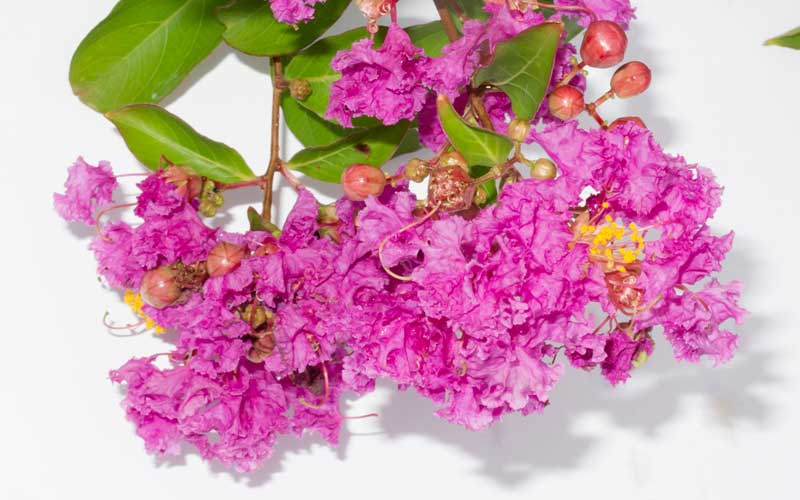

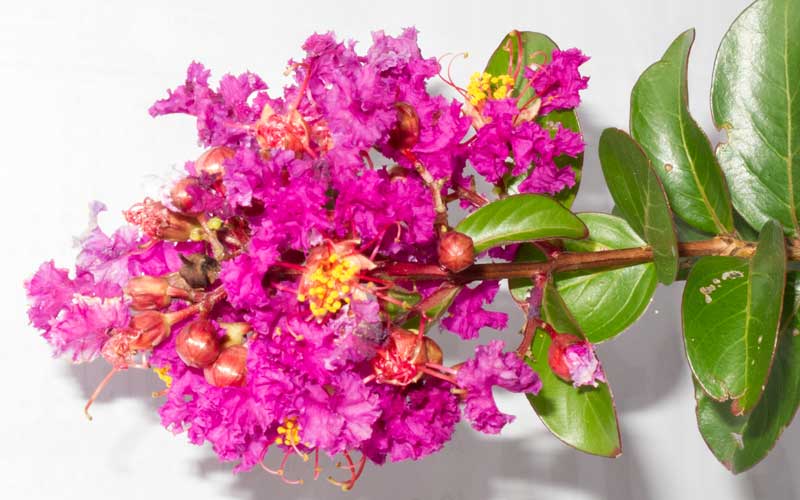


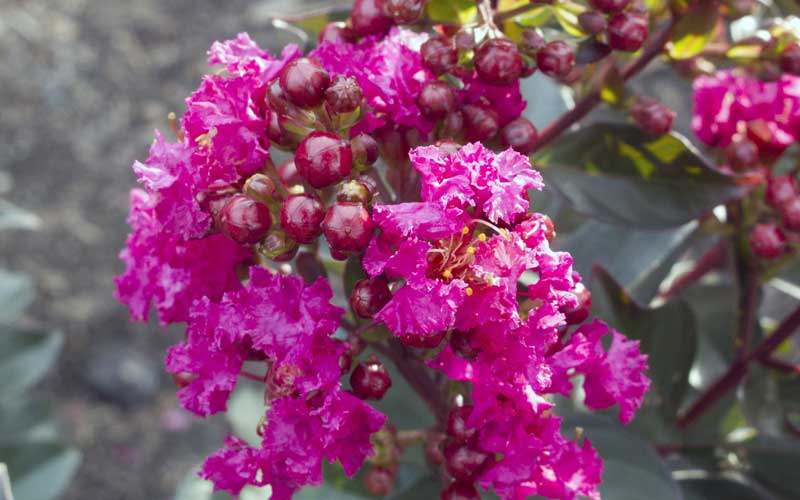
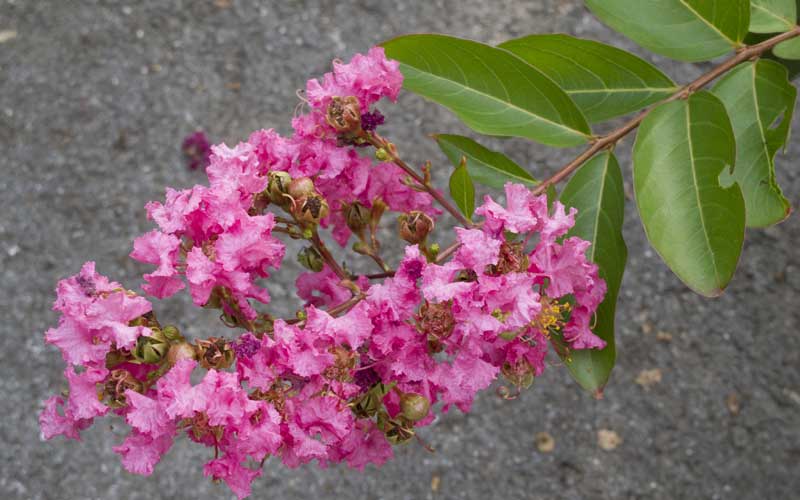

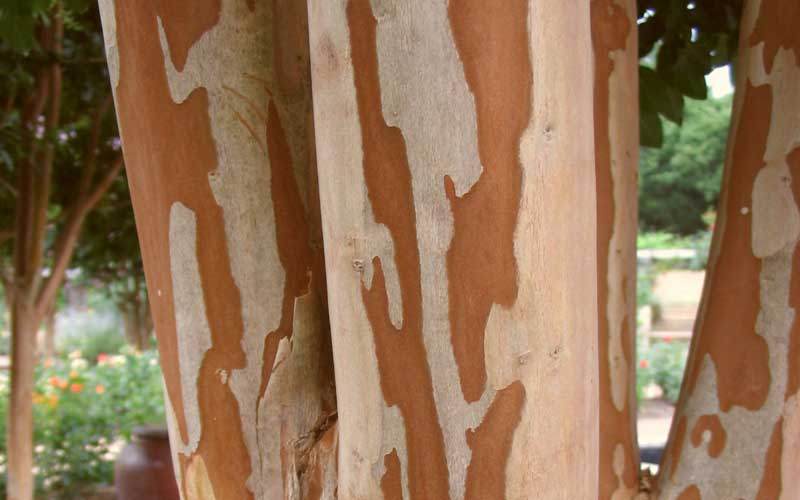
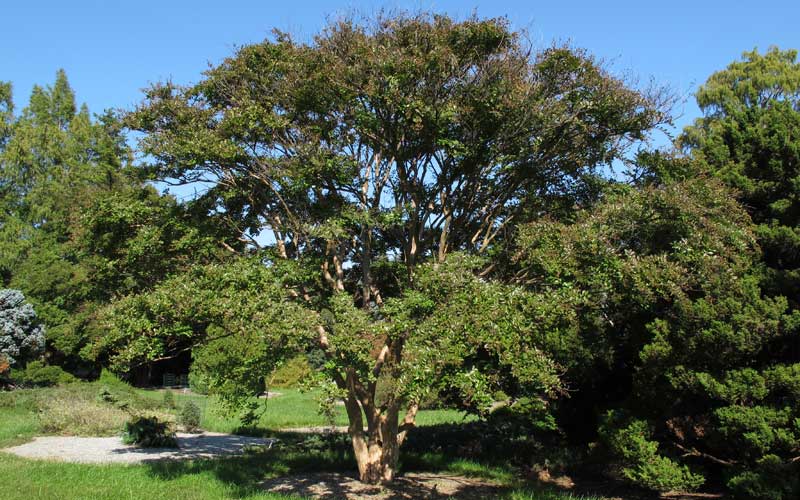
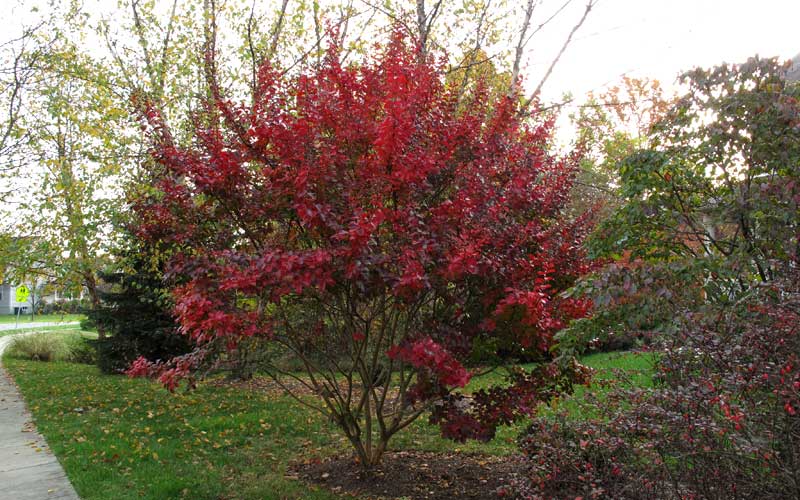
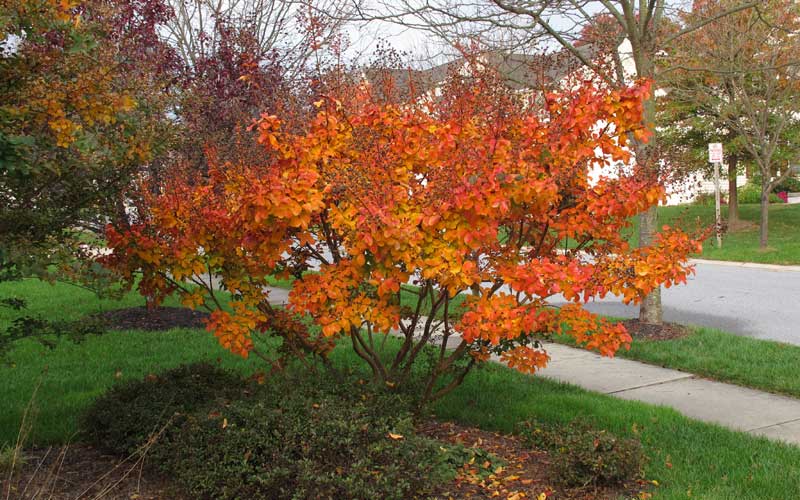

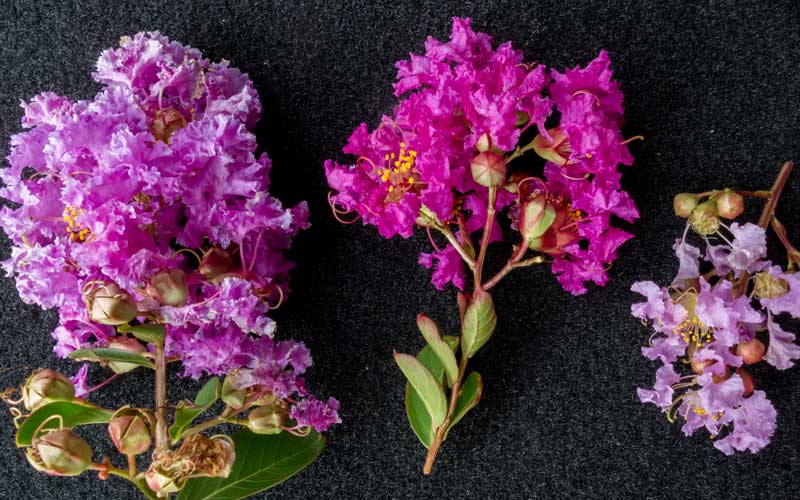
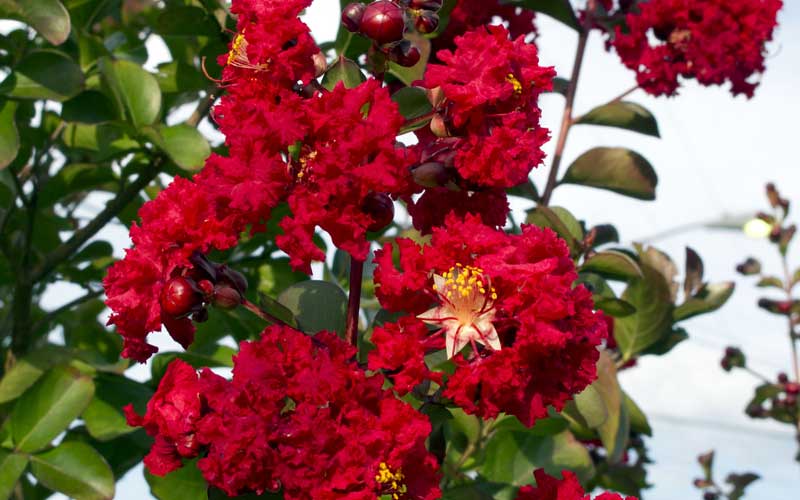
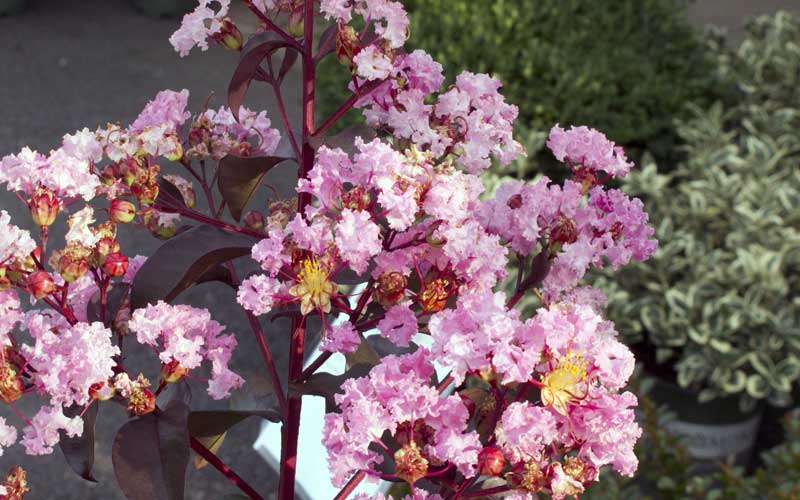
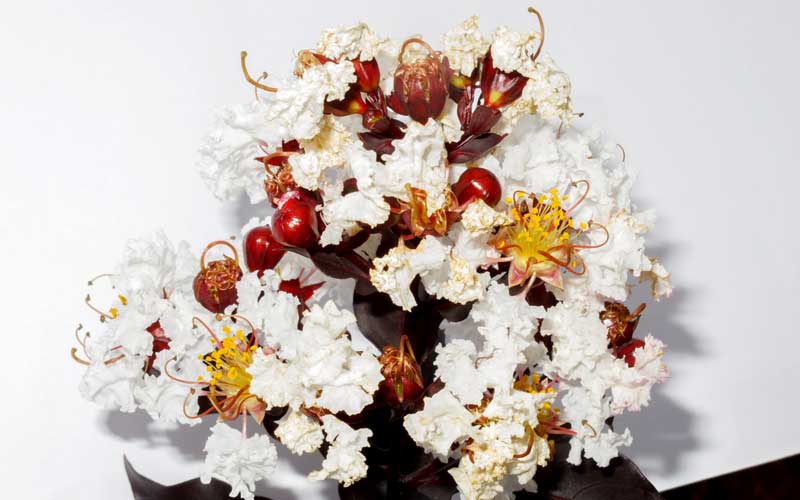

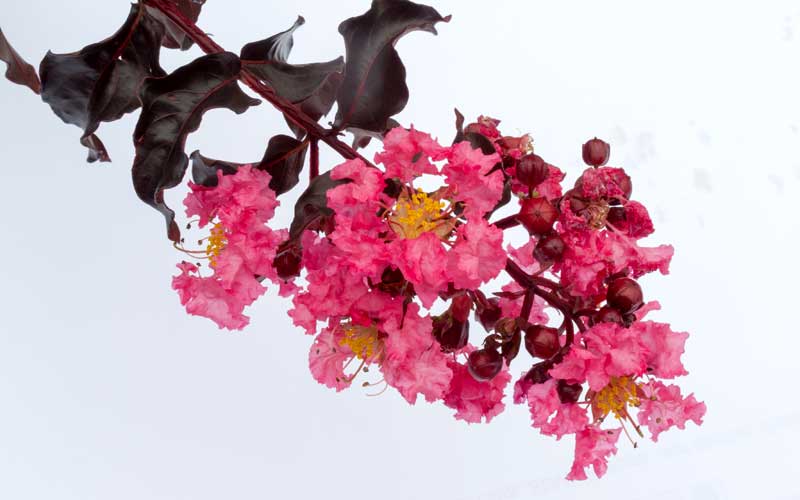
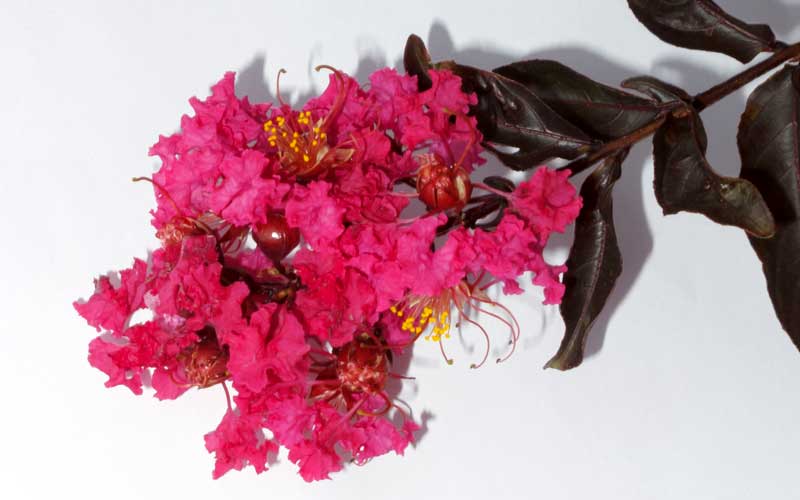

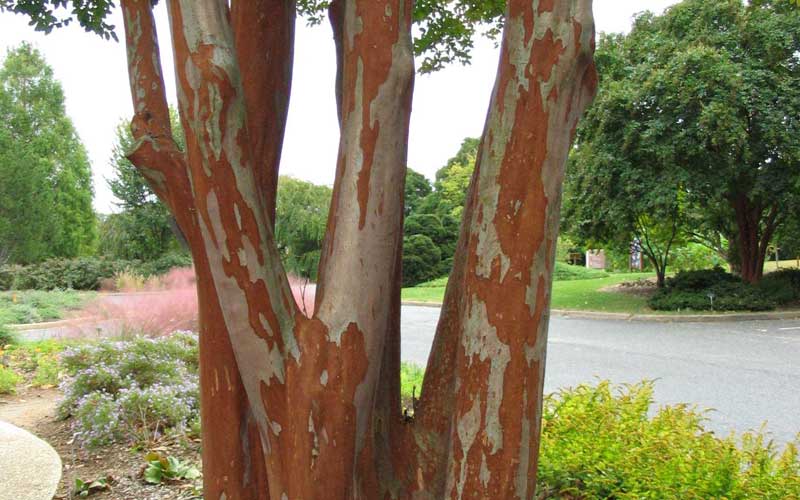
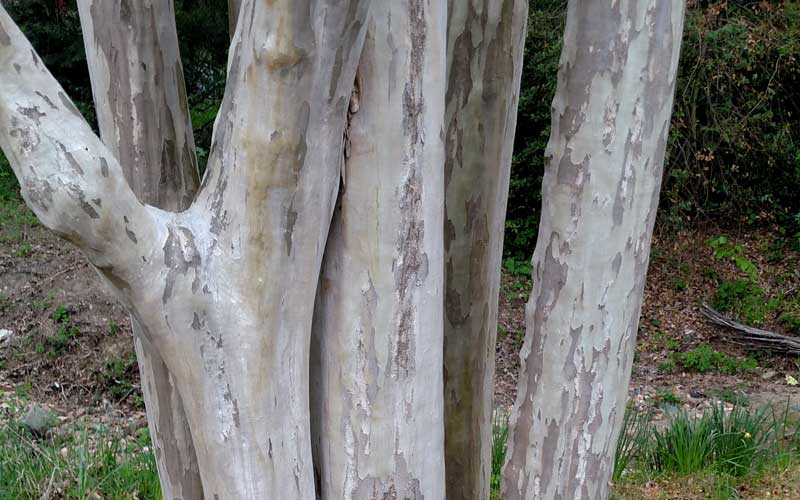



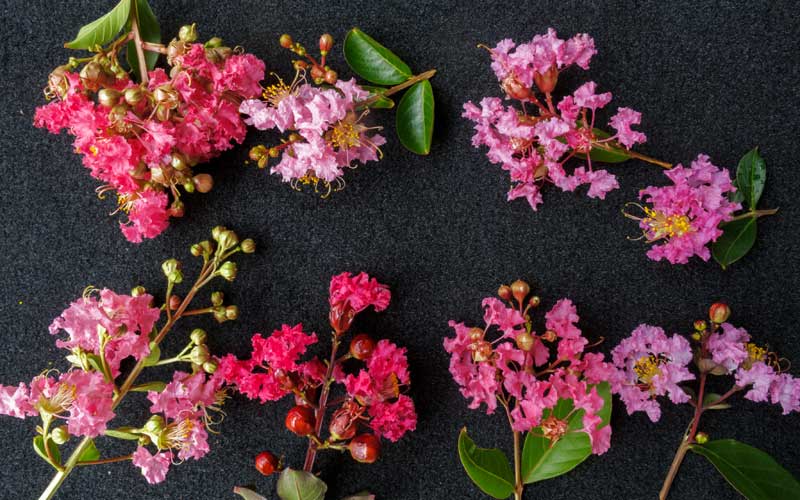
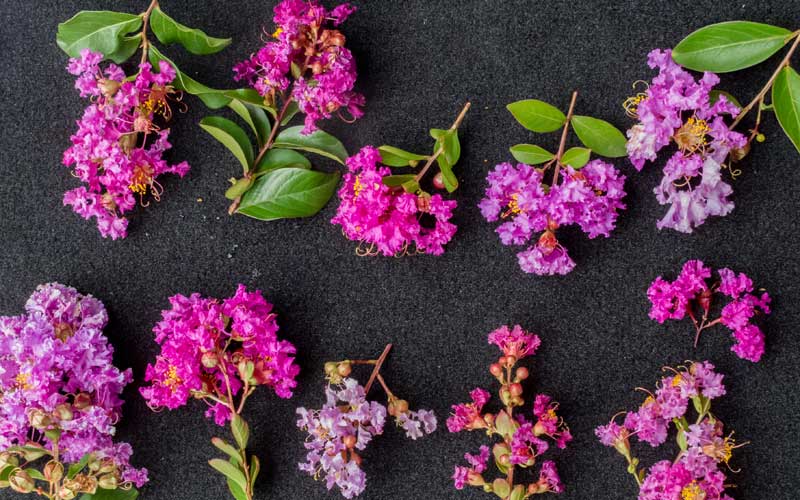
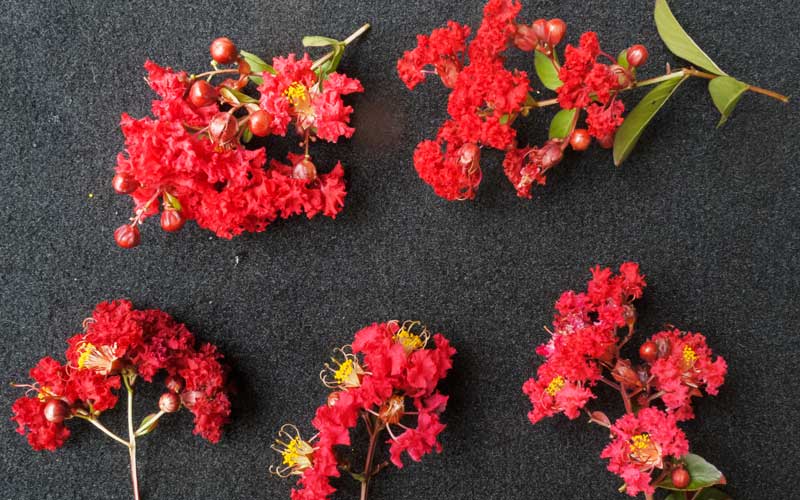
Great read! We love our crape myrtles and look forward to the blooms every year! They get more and more enchanting as these trees grow!